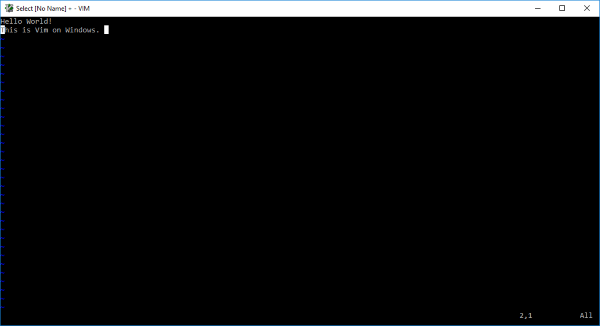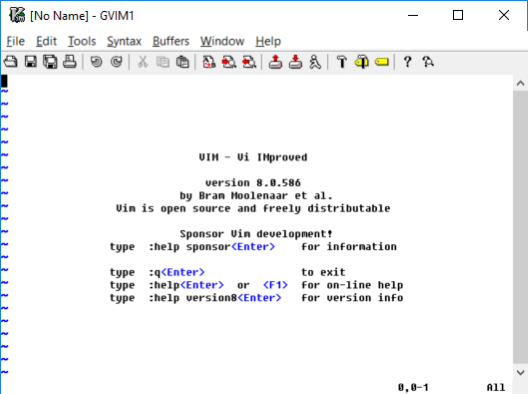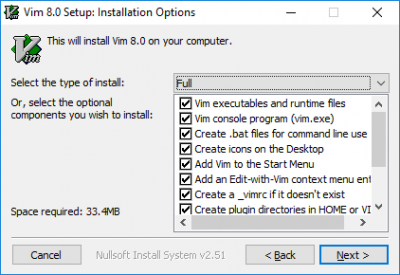IDEs have surrounded developers since long, but the older generation of developers used to write their code right from the terminal window. Although IDEs increase productivity and made it easier to code with features such as auto-complete and IntelliSense. Using a bare-bones text editor like Vi/Vim has its own benefits. You get to write the code from scratch as there are no templates. It deepens your knowledge about a programming language and makes sure you understand each bit of the code. If you are into software development, you must have heard and feared about the good old Vim. This post covers how to set up and install Vim Text Editor on Windows 11/10.

Installing Vim Text Editor on Windows 11/10

Most of the budding developers are afraid of using Vim, even I am. But once you get used to it, you realize that you have a better command over the keyboard and the programming language. Although Vim was introduced in UNIX systems as Vi text editor, there is a workaround to install it on Windows too.
For all those who are new to Vi/Vim, I must tell you that this is one of the oldest and one of the most stable text editor. It runs within the terminal window and comes with powerful features such as multi-level undo tree, extensive plugin system and integration with many other tools. If you were/are a Linux user and looking to install Vi/Vim on Windows, you are at a right place.
Step 1: You need to download the Vim Text Editor Windows installer to get started. Head over to this link and download the installer for Windows.
Step 2: Now open the setup file and follow the on-screen instructions. In the step where the setup asks you for the installation type, select Full and hit next.
Step 3: Once the installation is complete, open a CMD window and type in vim and hit enter. Voila, now you are inside Vim Text Editor. Typing something won’t work because using Vim is not as simple as is.
Learning Vim
One of the best ways to learn Vim is to go through the official documentation. This link will take you to the documentation which can further navigate you to the best sources to learn vim. If you are looking for something quicker, just type :help inside the vim window, and you can go through the inbuilt guide.
This may seem useless, but the correct way to quit vim is by typing :q and not by hitting the close button on the Window.
If you’ve been already using Vim Text Editor on UNIX systems, then this should feel similar. All the commands should work as it is and there are not many things that are different. If you want to configure Vi/Vim on Windows, you need to edit the configuration file.
On UNIX, the config file is called .vimrc whereas on Windows it is called _vimrc.
The configuration file can be located inside your $VIM folder which is nothing but C:\Program Files (x86)\Vim\_vimrc.
You can edit this file if you want to add some custom configuration.

So, this was all about installing and running Vim on Windows. You can also start Vim directly from the Start menu. The editor also associates itself with the text files, so you can choose it as a default program to open text files. This Vim installation also comes with gVim which is nothing but a Vim with some GUI. You can use gVim if you are not comfortable with Vim. gVim can be configured separately, and it runs differently from Vim.
Can I use vim editor in Windows?
Yes, you can use the Vim editor in Windows. Whether you use Windows 11, Windows 10, or any other version, you can use Vim on your computer. You can download the set-up file from the official website, vim.org. A detailed guide to installing this software is mentioned in the article and it is recommended to follow it minutely.
How do I open Vim in Windows 11/10?
To open and use Vim in Windows 11 or Windows 10, you need to install it first. For that, you can go through the above-mentioned steps to install the app. Next, you can use the Command Prompt to open a file in Vim. For that, enter the following command: vim [file-name]. Once done, you can find the file on your screen.
If you face any issues in installation, do share them in the comments. Also, share your experience about using Vim Text Editor on Windows in the comments down below.
